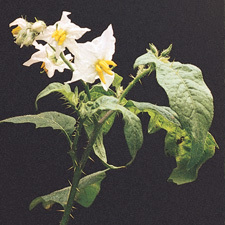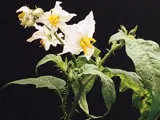 Horse nettle
Horse nettle
Common name: Horse nettle
Botanical name: Solanum carolinense
Management category: Eradication
Horse nettle is native to the southern United States. Likely to have arrived in New Zealand through contaminated maize seeds, and naturalised from there by the 1940s.
Why is it a pest?
- Horse nettle is extremely invasive and hard to kill.
- All parts of the plant are poisonous.
- Ingesting any of the plant can cause fever, headache, scratchy throat, nausea, vomiting, and diarrhoea ingesting the fruit can cause abdominal pain, circulatory and respiratory depression, or even death.
Where is it found?
Two current sites in the western Bay of Plenty are under active management. No other known sites in the rest of the region.
Found in pasture and arable land especially in maize paddocks. At risk areas include pasture, roadsides, forest margins and amenity areas.
What does it look like?
- A perennial herbaceous plant up to 1m tall that dies back over winter.
- A key feature are the small 5mm spines that cover the leaves and stems.
- Stems become woody with age.
- Flowers are star-shaped with five white to violet petals and a yellow centre and grow in clusters.
- The fruit is a green berry when young, turning yellow and wrinkled with maturity.
What are the rules?
Eradication
Horse nettle is an eradication pest. This means that it is already present in the region but only in a limited infestation. The Bay of Plenty Regional Council is responsible for horse nettle control in the region. Action may be required from landowners or occupiers to support a control operation.
How do you get rid of it?
Horse nettle is exceedingly difficult to control. Please do not attempt to control it. Let us know if you think you have seen this plant or have it on your property by emailing stop.pests@boprc.govt.nz or alternatively call 0800 884 880.
Images

